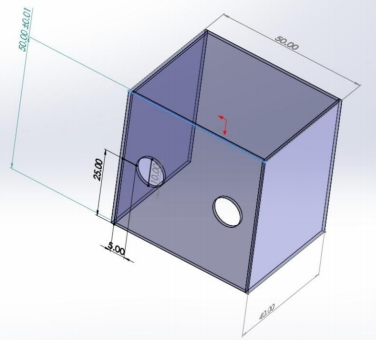More dogma? I was taught that as the Glasgow Coma Scale (GCS) score drops toward 8, the higher the consideration of intubating the patient. And that a GCS 8 was pretty much an absolute indication for inserting the endotracheal tube. The rationale was that the more obtunded the patient was, the less able they were to protect their airway.
Even ATLS, our trauma textbooks, and practice guidelines from the likes of EAST recommend intubation for GCS 8 and less.
Having said that, I know many of you have been in a situation where you have a patient with GCS 8 or so, and they are lying there breathing peacefully with good oxygenation and ventilation. Do you really need to put in that tube? And we also tend to be very forgiving with obtunded children, avoiding premature intubation there as well.
Intubation is not a benign procedure. There is the potential for mayhem during the process, ICU admission will be required, and a host of ventilator and sedation-related complications are possible once the patient arrives there.
The trauma group at LAC + USC decided to look into this. They performed a five-year retrospective study of data from the TQIP database. A subset of patients was selected with isolated blunt head injury and GCS 7-8 who did not require immediate operation upon arrival. They were divided into intubation and non-intubation groups, and these were further subdivided into intubation within an hour of arrival, intubation after an hour, and never intubated groups.
Here are the factoids:
- A total of 2,727 patients were studied; about two thirds were intubated within an hour, a quarter were never intubated, and the remaining 9% were intubated after the first hour
- Immediately intubated patients were significantly younger and had fewer comorbidities
- Mortality was 19% in the immediate intubation group vs 27% in the delayed group vs 11% in the never intubated group
- Complications were significantly higher after immediate intubation, particularly DVT and ventilator associated pneumonia (VAP)
- Regression analysis indicated that immediate intubation was independently associated with mortality compared to late or never intubated patients
- Using additional regression testing, the authors concluded that the following two subsets of patients would benefit most from early intubation:
- Younger patients (age < 45) with head AIS 5
- Patients age <65 with head AIS 5
The authors recommend that “future research focus on more adequate parameters to identify patients requiring immediate intubation and should avoid an isolated fixed GCS threshold.”
Bottom line: This is a difficult paper to understand (at least for me). It looks like the authors are saying we should avoid immediate intubation of severe TBI patients with depressed GCS to reduce mortality and complications.
But you need to read the whole paper closely to really get it. First, let’s look at those mortality figures. The mortality in the three groups was:
- intubated < 1 hour after arrival – 18.7% (from n = 1,866)
- intubated > 1 hour after arrival – 27.4% (from n = 223)
- never intubated – 11.4% (from n = 638)
- If you combine the last two lines you get the mortality in the non-immediate intubations = 15.5% (from n = 861)
The authors then claim that the mortality for immediate intubation is greater than non-immediate intubation (the other two groups). This may be somewhat misleading, because the delayed intubation group actually has a higher mortality than the immediate group (27%)! This fact is covered up by combining delayed intubation with the never intubated group, bringing the number down to 15.5%!! Why shouldn’t you say that intubating the patient at any time is bad, immediate or delayed??
They suggest some criteria to try to focus in on the patients who really need intubation: younger patients (age < 45 or < 65) with head AIS 5 and GCS 7. Unfortunately, you can’t determine which patients have an AIS 5 in their head without a head CT, which may push them into the higher mortality delayed intubation group.
Remember, this type of study can only show an association, not cause and effect. The authors suggest that early intubation results in more deaths and complications. My suspicion is that patients with severe TBI don’t do poorly because they were intubated. I believe that they were intubated because the clinicians feared that they would do poorly. Unfortunately, this is information that can only be gleaned from a prospective study, not a retrospective database review. And no amount of statistical manipulation or regression analysis can make up for this shortcoming.
This is yet another one of those studies that ends by concluding that a better study should be done. That would be okay if this one actually provided a hint that the endeavor would be worthwhile. But it doesn’t. I didn’t really learn anything from it, unfortunately.
So I still heartily recommend using your existing training, guidelines, and judgement to intubate these patients early and safely!
Reference: Isolated traumatic brain injury: Routine intubation for GCS 7 or 8 may be harmful! J Trauma, publish ahead of print, DOI: 10.1097/TA.0000000000003123, Feb 16, 2021.



